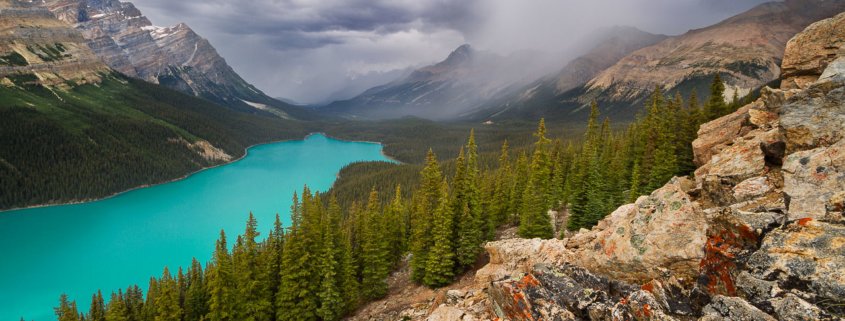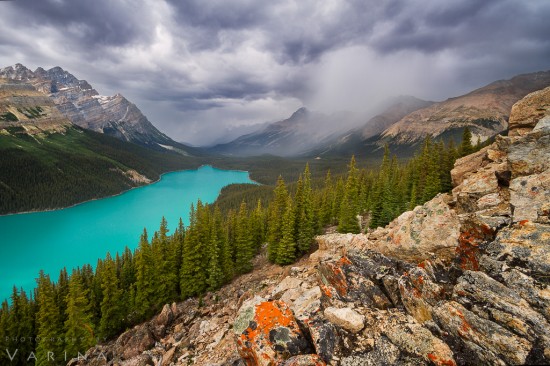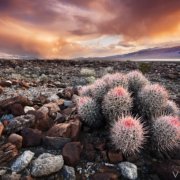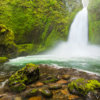Hyperfocal Distance Tips for Landscape Photographers
What comes to mind when you hear the term “hyperfocal distance”? Perhaps numbers and complicated math? Believe it or not, it’s much simpler than it sounds. Hyperfocal distance is a crucial concept that many landscape photographers use to achieve sharp focus across their scenes.
For landscape photographers, the power of hyperfocal distance shines when light conditions change rapidly. By setting the correct focusing point to keep everything sharp, you eliminate the need to constantly adjust focus—provided you don’t alter your aperture or focal length. This allows you to focus on landscape photography composition and make the most of fleeting light conditions, capturing as many stunning landscape photos as possible.
However, beginners often find hyperfocal distance overwhelming. Its interaction with composition, depth of field, and exposure can feel complex. These challenges frequently lead to common mistakes. To help, we’ve compiled five practical tips for beginners to master hyperfocal distance and consistently capture sharp, breathtaking photos.
#1: Avoid Focusing Directly on Your Subject
When photographing a strong subject that dominates your composition, it’s natural to focus on it. However, beginner photographers often mistakenly try to align hyperfocal distance with their subject distance. In reality, hyperfocal distance focusing is independent of the subject’s position within the frame.
Sometimes the hyperfocal point aligns with your subject, but often it’s closer or farther away. This is why we teach a straightforward workflow in our Hyperfocal Distance Tutorial that removes subject distance from the equation. By following this approach, you’ll achieve sharp focus without the guesswork.
#2: Be conservative when setting your focusing distance
When we teach hyperfocal distance in our landscape photography workshops, one of the most frequently asked questions is:
How do I measure the distance when selecting my focus point?
And we we can certainly understand why this question comes up. Traditionally, hyperfocal distance is associated with a mathematical formula. This formula gives an exact distance to focus so that everything in half the distance between the focusing point and infinity is always sharp.
But, have you ever wondered what happens to your depth of field if you are slightly off?
As it turns out, if you conservatively estimate the distance and focus slightly farther away, your entire frame—from half the focusing distance to infinity—will still remain sharp. You can test this using your favorite depth of field app.
However, if you are very aggressive and focus too close to your setting and focus closer than hyperfocal distance, you may not get everything sharply in focus. For this reason, we always advise our students to be conservative in estimating distance when using hyper focal distance.
#3: Look beyond the Set It and Forget It approach
One of the biggest advantages of using a hyperfocal distance workflow is that the landscape photographer can use it as Set It and Forget It approach. Here is how Set It and Forget It approach works:
- Set the camera to get sharp focus for a given aperture and focal length using hyperfocal distance.
- Lock this focus settings on the camera by placing the camera in manual focus mode.
- At this point everything between half the hyperfocal distance and infinity is in sharp focus.
- You can then change your composition and capture as many photos as you like as long as you don’t change the focal length or aperture.
So, when landscape photographers are confronted with spectacular light conditions, they can use several photos without having to worry about focus setting on their camera. However, it is easy to forget that the Set It and Forget It approach is not always optimal for taking photos.
When I was shooting at Geysir in Iceland, the sky was putting on a spectacular show. I had just finished photographing a blue hot springs with a very close foreground object to avoid distractions using an F16 aperture setting. Using manual mode, I was using the Set It and Forget It approach as the light changed.
I then moved to photograph this exploding geyser as seen in the image above. For this shot, I had two options for capturing a stunning landscape photo:
- I could easily photograph this scene without changing the aperture using the Set It and Forget It approach. However this would require me to raise my ISO to get fast enough shutter speed to freeze the motion of the geyser.
- I could abandon the Set It and Forget It approach and use a lower aperture that would allow me to raise the shutter speed at a lower ISO. Of course this would require a readjustment of my focus setting as well.
Considering the two alternatives, the Set it and Forget it approach works. But would give me a lower quality image by forcing me to use a higher ISO. My choice was to abandon the Set It and Forget It approach and take the time to re-focus the camera.
So, while the Set It and Forget It approach works great for many situations, it may not always be the right thing to do.
#4: Know your camera lens limitations
Once we had a student ask us this question:
Why not always use F16 and set the camera using Hyerfocal Distance? This way, I only have to remember a single hyperfocal distance for a given focal length. The workflow would be super easy.
This is a very valid point. This would make your workflow a lot simpler.
However, landscape photographers should remember an important fact. Every camera lens has its own sweet spot where the performance of the lens is optimal. For most lenses, the performance is optimal between F5.6 and F11 apertures. Once you start using your lenses outside this aperture range, lens performance degrades. But the amount of this degradation varies for every lens.
Knowing the limitation of your lenses helps you select between using a very narrow aperture to get everything sharp using hyperfocal distance or relying on other techniques such as focus stacking.
Sometimes this limitation also dictates our choice of what lens to use for a given situation. For example, Varina used a Carl Zeiss Batis 25mm F2 Sony FE camera lens to photograph the aurora in Iceland in the image above because of the superb performance of the lens at F2.
#5: Work with available light and weather
It is true that by using the hyperfocal distance rule correctly, everything in your frame from half the distance from the hyperfocal point to infinity will be in sharp focus. But getting the focus correct does not necessarily guarantee sharp photos. Here are few things that can reduce the sharpness of the photos even when your focus setting is correct:
- Camera motion: It is important to use a sturdy tripod and remote release. This ensures that your camera is steady when you are taking a photo. This is specially important for long exposures.
- Subject motion: Moving subjects can induce motion blur in landscape photography causing loss of sharpness.
- Wind: Wind can create motion in some of the elements (such as vegetation). This induces motion blur in the image causing you to lose sharpness. Very strong winds can also cause your camera to move, inducing motion blur throughout the scene.
- Weather: Sometimes fog, rain, and snow can obscure small details in making the photo appear soft.
Wrap-Up
Mastering hyperfocal distance is a powerful tool for creating sharp landscape photos. However, success lies in combining this technique with a deep understanding of your equipment, light, and weather. So, if you intent is to get sharp photos, you must look beyond hyperfocal distance to create photos that match your vision.
Now that we have shared some hyperfocal distance tips for landscape photographers, are you ready to add it to your arsenal? Our Hyperfocal Distance tutorial shows how we use this powerful concept in practice and come away with sharp photos every time. We share our simple workflow, provide practical tips, and demonstrate how we use this powerful concept in real world situations.













